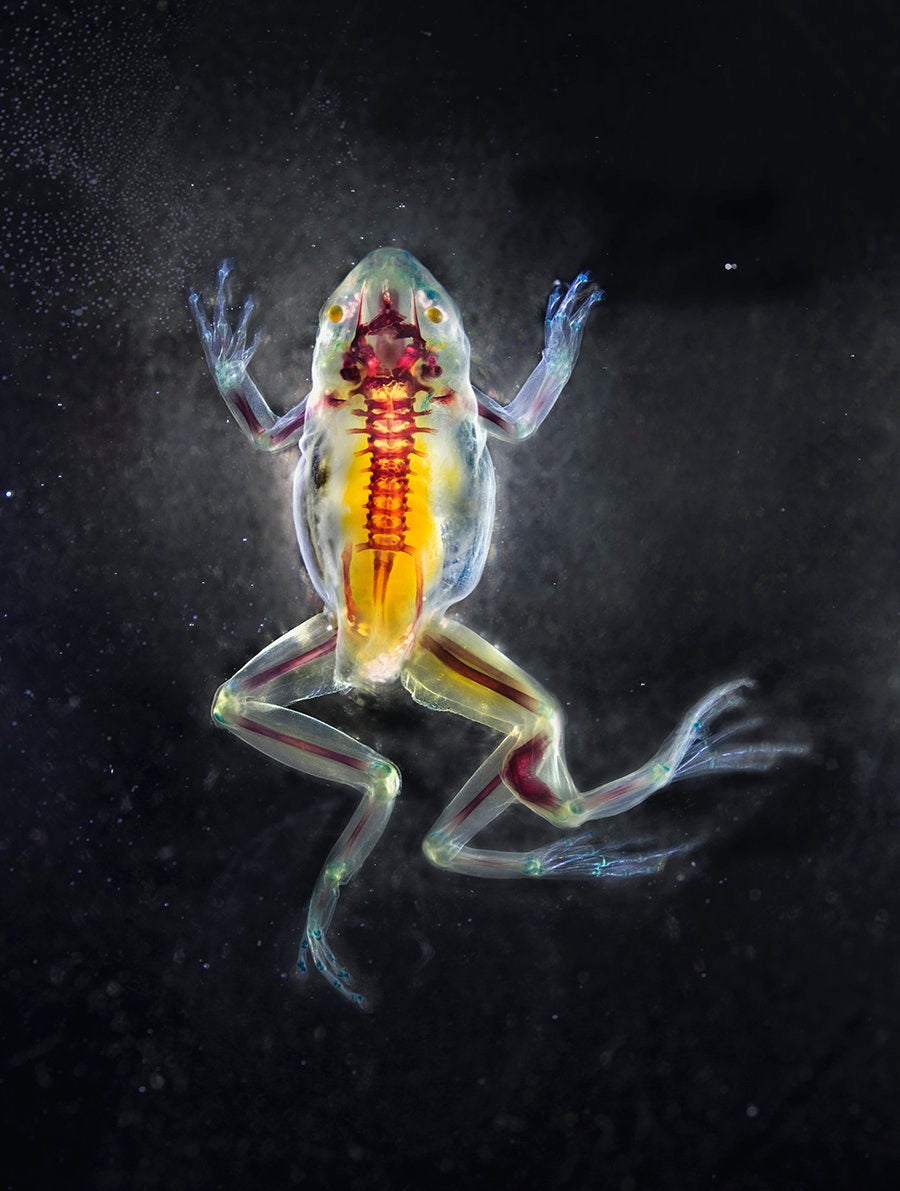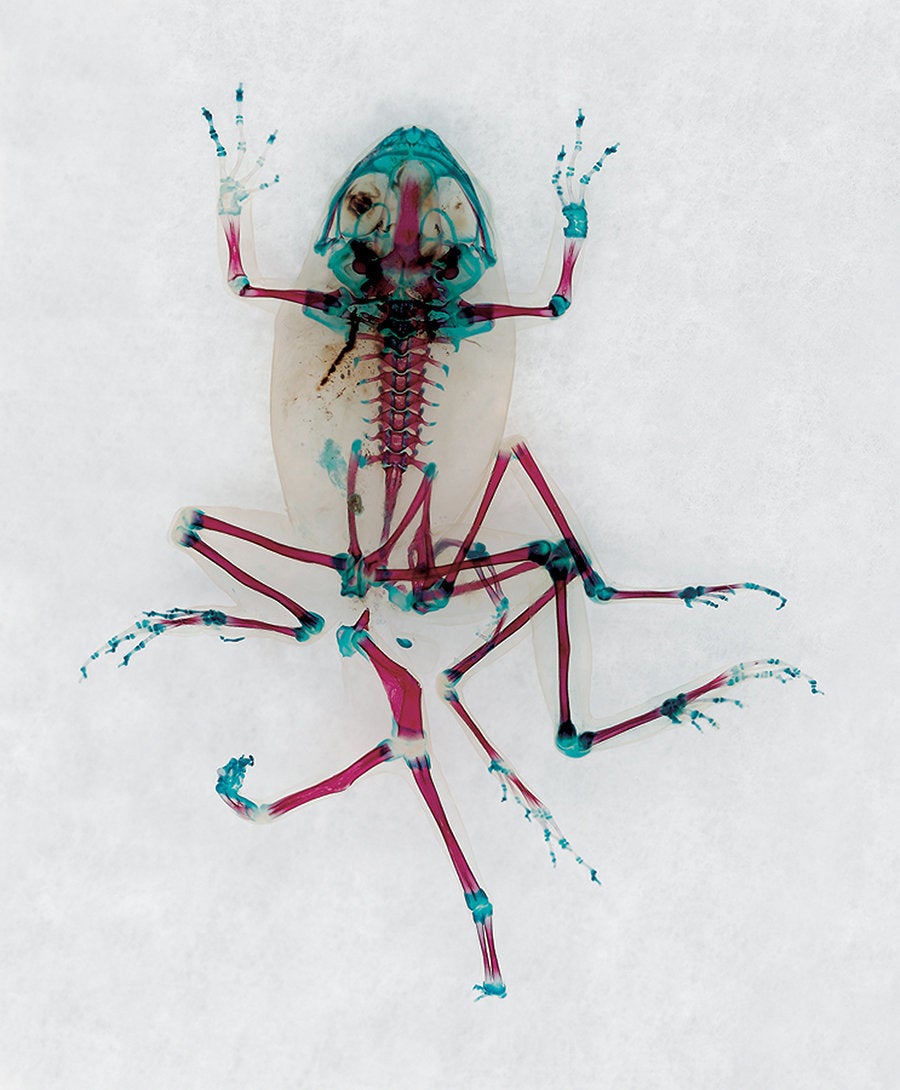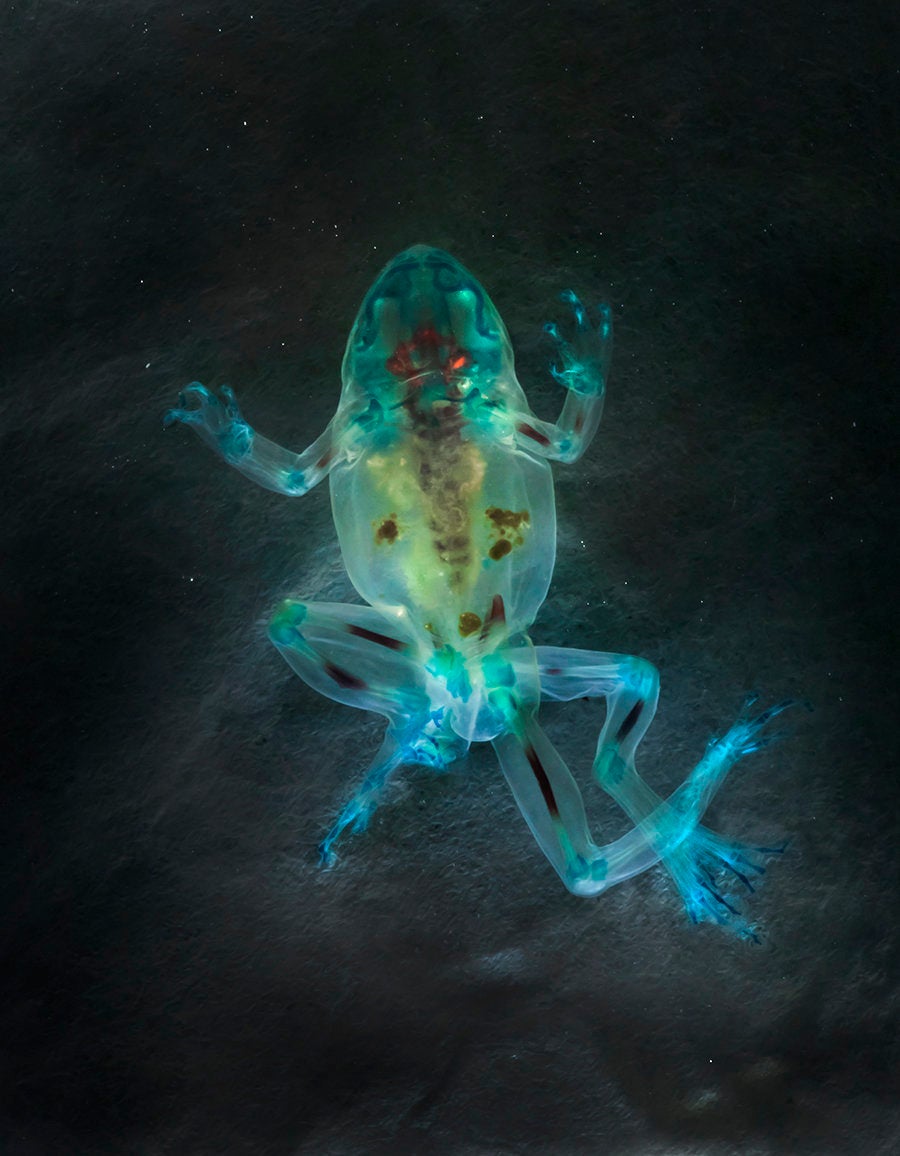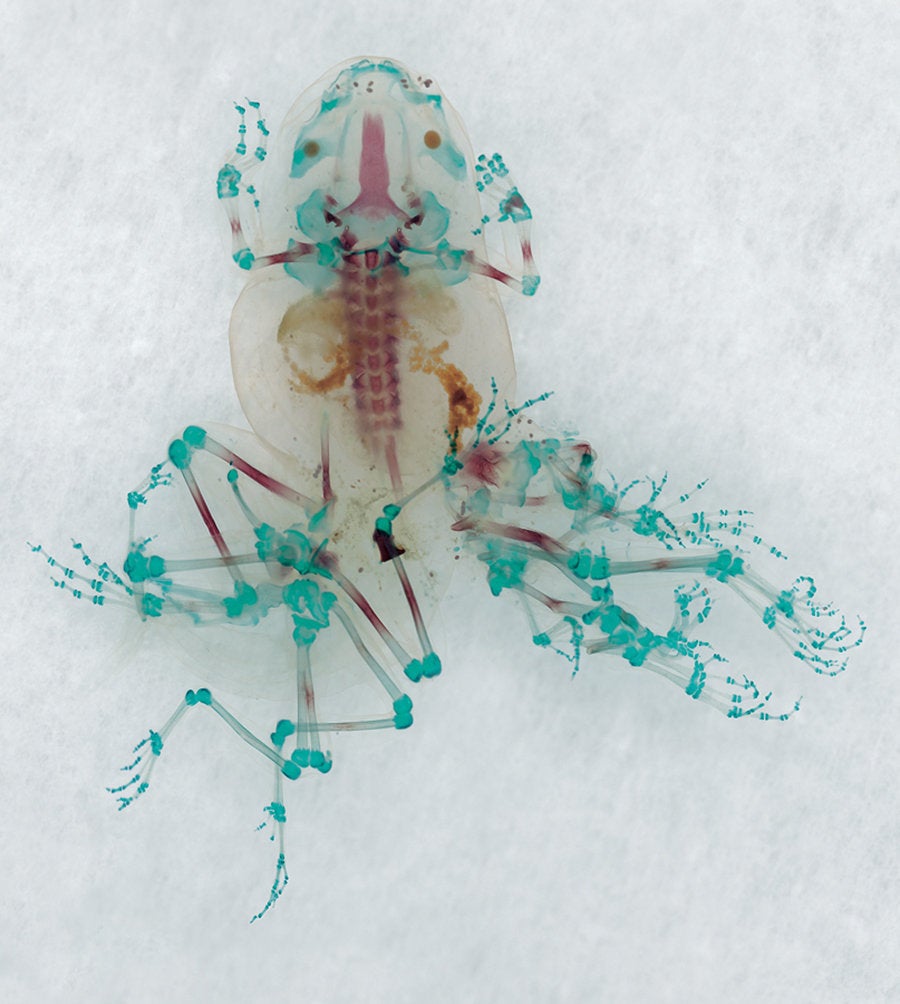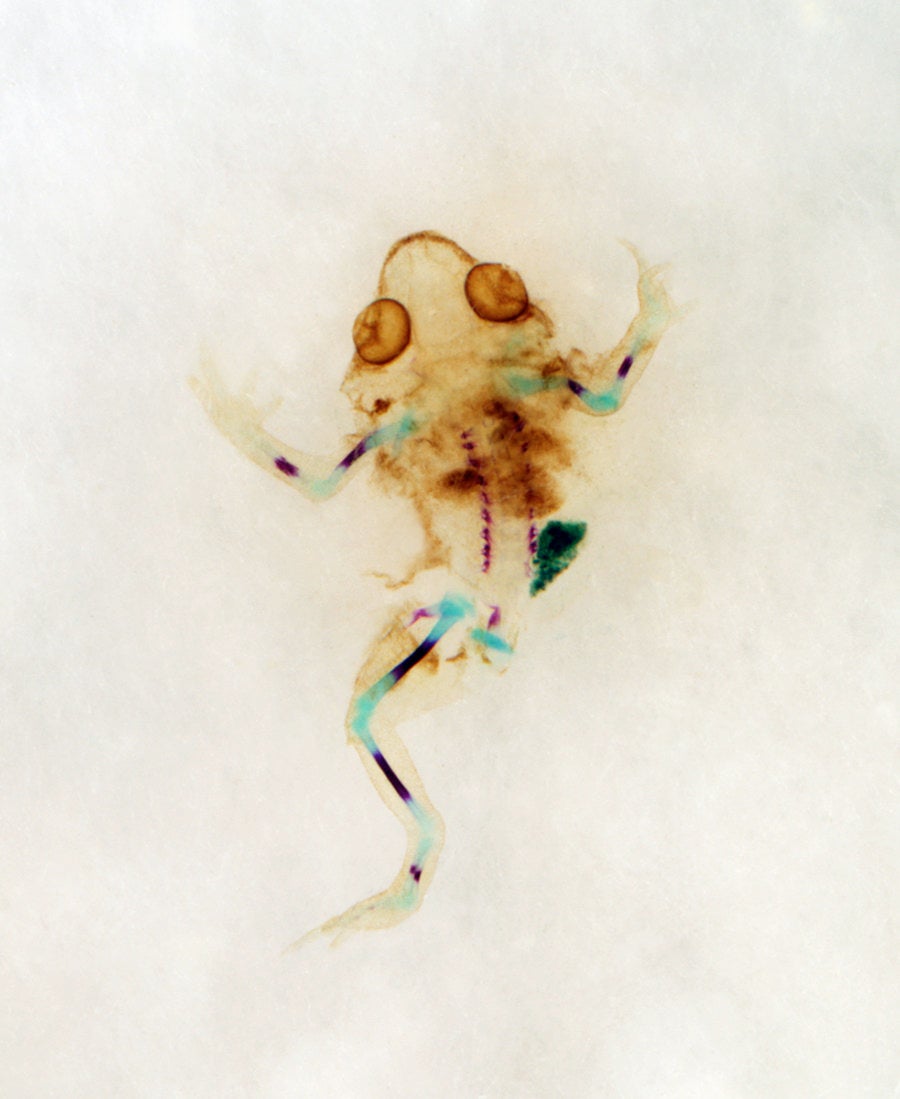Brandon Ballengée is really into frogs and amphibians. His interest isn't like ours -- common folk that used to stumble upon them in ponds as a kid and thought they were cute -- but to the extent where this artist-biologist-environmental activist has made them his life's work.
Ballengée, whose research focuses on population declines and causes of deformities in amphibians, has been collecting these tiny critters from all over the world for more than 10 years. He uses enzymes to make their tissues transparent and injects colored dyes to make their bones, tissues and deformities stand out. The specimens are then posed, imaged with a high-resolution scanner and printed with water-based ink, according to Metro. His work provides an unprecedented view on this environmental issue -- and invokes empathy towards amphibians by making them look beautiful.
"The specimen preparation does allow for a level of abstraction, while at the same time revealing the complex architecture of these terrible abnormalities," Ballengée told Metro. "This push and pull is important to bring people in close to the art -– for a one-on-one experience with an organism they may have had a part in creating."
After one quick glance at his work, it's clear that many of these frogs have excess limbs or other oddities. So why is that?
Ballengée's research has pointed to predation and parasites -- both spurred in large part by chemical run-off -- as the culprits, according to Fast Company. And the U.S. Geological Surveys identifies injuries from predators, a specific minute parasite (fluke), nutritional deficiencies and contaminants as the leading causes of amphibian malformations and decline. Monitoring and research on this subject is still ongoing.
These images are featured in Ballengée's book, Malamp: The Occurrence of Deformities in Amphibians. Some of the Malamp Reliquaries are currently part of a retrospective exhibition of his work at Museum Het Domein in Sittard, Netherlands that runs through June. And if these images have caught your attention, Ballengée has intriguing images of many other species on his website.
